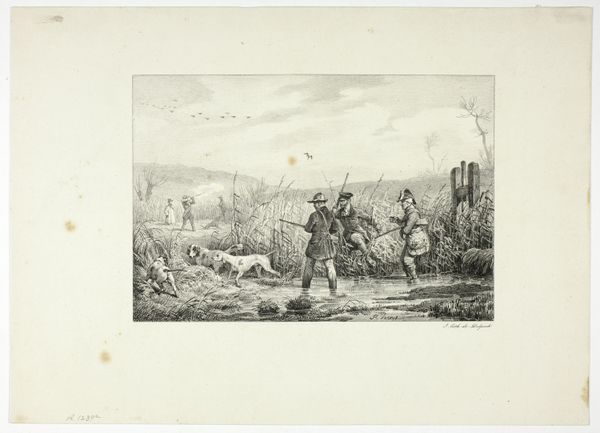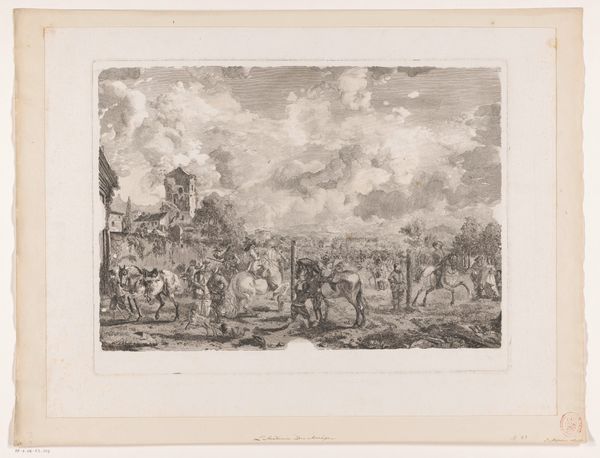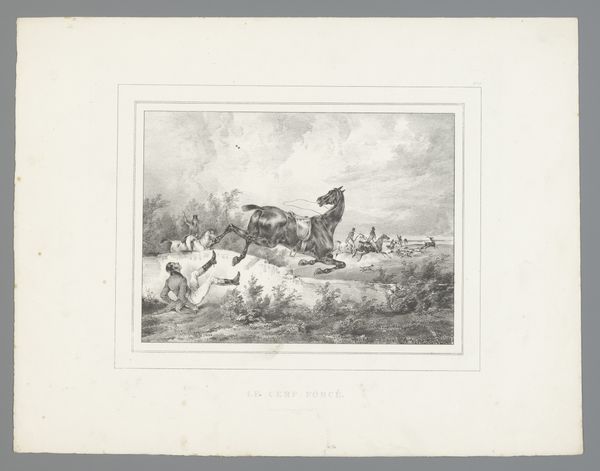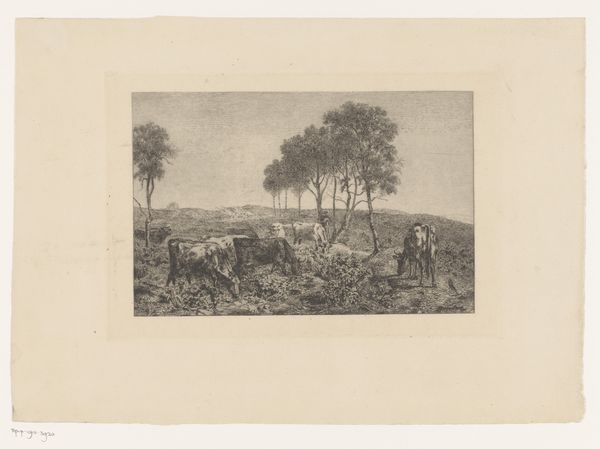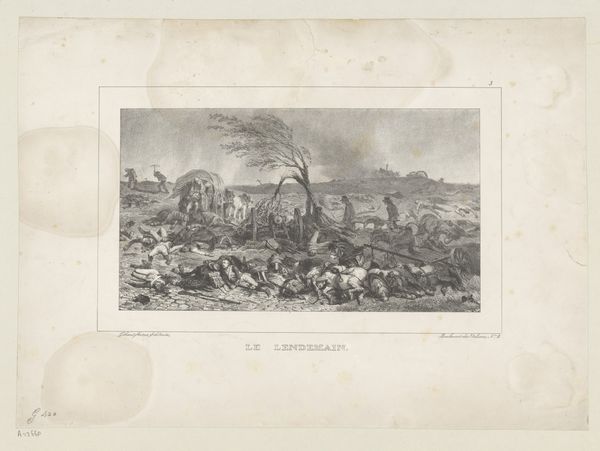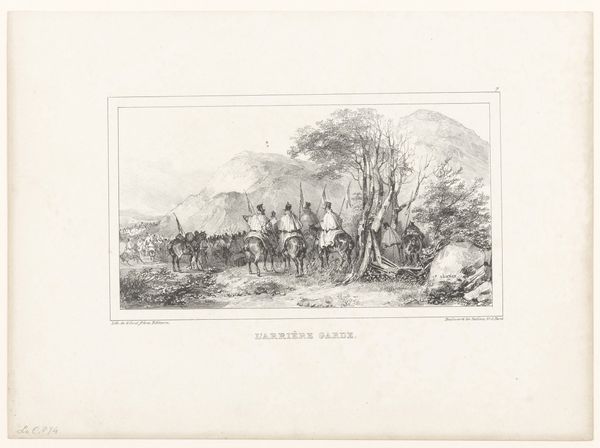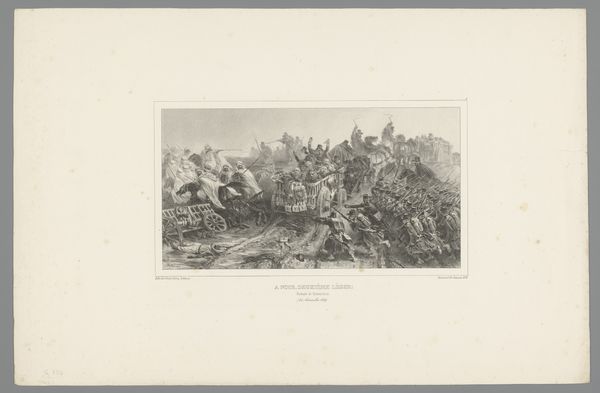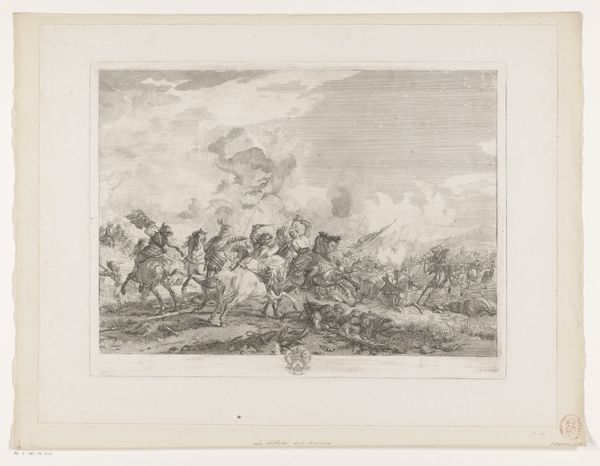
lithograph, print, engraving
#
narrative-art
#
lithograph
# print
#
old engraving style
#
romanticism
#
line
#
cityscape
#
history-painting
#
engraving
Dimensions: height 365 mm, width 550 mm
Copyright: Rijks Museum: Open Domain
Auguste Raffet made this print, French Army Advances, in 1832. It depicts French troops on the march, an image that evokes ideas of military might and national identity. Raffet created this image during a time of significant political and social change in France. The July Revolution of 1830 had just replaced the Bourbon monarchy with the July Monarchy under King Louis-Philippe. Through close looking we see the soldiers marching, but their faces and bodies appear tired. In the foreground, a woman kneels on the ground in despair. Is this an image celebrating the troops or critiquing the social cost of war? In a time of political upheaval, was Raffet's image a critique of the institution of monarchy? Was he commenting on the social structures of his time? Was it self-consciously conservative or progressive? To understand the print's context, a historian would consult sources such as military records, political pamphlets, and popular press accounts. The meaning of art is contingent on social and institutional context.
Comments
No comments
Be the first to comment and join the conversation on the ultimate creative platform.
